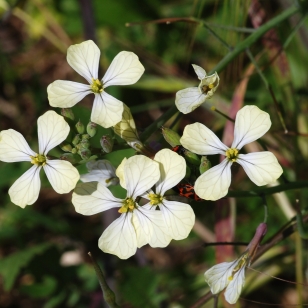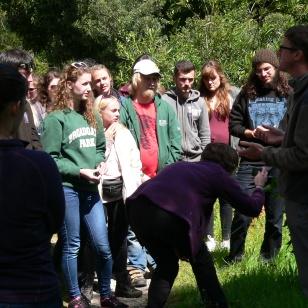The four types of plants
6 Replies
Botany has an image problem. Part of the issue is that it’s perceived as possessing arcane and esoteric language, making it impenetrable to outsiders. There is some justification in this; an average reader would need a large glossary to hand in order to tackle the more recondite specialist floras. That said, for readers in the UK, there are excellent and accessible floras that anyone can use, which, combined with a guide to plant families should be enough to set anyone on the right path.
As Kew Gardens’ recent State of the World’s Plants report attests, there are almost 400,000 known plant species, a number which is only set to increase. This is daunting complexity. There have therefore been multiple attempts to simplify the diversity of plants into a set of categories, based on their taxonomy, appearance or function, to help break down the problem into manageable chunks.
One of the most influential attempts to do this was by the great Danish botanist Christen Raunkiær, a founding figure in plant ecology, who recognised a series of plant life forms:

Plant life forms as determined by Raunkiaer (1907). Plant parts are distinguished between those which are ephemeral or temporary (thin lines) and those which persist through unfavourable seasons such as cold winters (dark lines). Names are given in the text.
These sketches appear to be straightforward divisions. One could easily map them onto common vernacular terms: tree, shrub, vine and so forth. Alas, would that it were so easy. The numbers on the above figure actually correspond to another set of impenetrable terms: (1) phanerophyte; (2–3) chamaephytes; (4) hemicryptophyte; (5–9) cryptophytes which include (5–6) geophytes, (7) helophytes and (8–9) hydrophytes. Many of these are subdivided further, and some others are not even shown in this figure (therophytes, aerophytes and epiphytes).
If you know a little Greek then all these names have sensible, intuitive meanings. If you don’t know any Greek — and let’s be honest, most people don’t — then this is a barrier.
That’s why, when I start my undergraduate botany classes, I make it much, much simpler. To begin with, there are only four types of plants, defined by function. These are:
- Plants you can eat
- Plants you can kill people with
- Plants you can use to get high
- The rest
Learn the first three, and the rest will come naturally. Below are some examples. One species you can eat (Eruca sativa, otherwise known as wild rocket or arugula), one you can kill people with (Aconitum napellus, perhaps the most poisonous plant in the northern hemisphere), and one you can smoke (Leonitis leonurus, a South African plant known as wild dagga).
I can spin a yarn around each of these species that leads on to important botanical understanding. The first time I pick up a clump of Eruca sativa and pass it round for students to taste, many are reluctant. A few will take a cautious bite then spit it out and declare it to be inedible. Only when you tell them that it’s rocket and a constituent of most salads do they give it a fair try. Within Europe, anything with that type of flower — four petals in the shape of a cross, white or yellow — is edible.* They are the characters identifying the Brassicaceae, an important plant family. One down already!
Poisons tick off a wide range of families, and are associated with great stories. Monkshood, Aconitum napellus, is seldom found growing wild in the UK. Most of its known sites are on the grounds of former nunneries. Why would nuns need poison? The answer is that is had another unpleasant traditional role: as an abortificant. In carefully-controlled low doses it was enough to provoke abortions, though the experience must have been horrendous, not to mention dangerous. Still, for the nuns, it was better to cover up indiscretions than risk scandal.
Psychoactive plants are harder to come by in Europe, but when you find one they generate disproportionate interest among students. Leonitis leonurus is an innocuous-looking garden shrub. If you want something to smoke, select the developing flower buds or, if none are available, the youngest leaves, because this is where the interesting chemicals are concentrated (which might remind you of another useful plant). It has this in common with many other plants, such as the tannins in tea leaves, because those chemicals we enjoy for their neurological effects are actually deterrent toxins aimed at browsing insects. They concentrate in the tissues that are most valuable to the plants. Come for the drugs, stay for the important lesson on plant defensive investment strategies.
Once you make the stories of plants personal, botany becomes more accessible, and more interesting. All it takes to engage a group of sceptical zoology undergraduates is to show them that first step. The rest can take a lifetime.
* There are a few exceptions, like Potentilla erecta (tomentil; actually Rosaceae), or cases where coloured sepals can confuse the unwary botanist (e.g. the golden saxifrages, Chrysospleniumspp.). These aren’t toxic but do taste terrible, so you’d soon spit them out, thereby learning another botanical lesson.
All images taken from Wikimedia Commons












